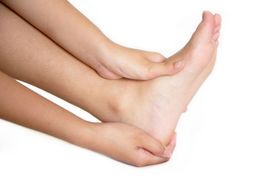Chiropractic Adjustment for Heel Spur Pain: How Does It Work?
Chiropractors use short, controlled force to the joints to relieve heel spur pain, correct malalignment, and increase range of motion. Here's how it works.
Published July 30, 2022.
One out of every twenty people with heel spurs experiences pain. Most people do not take care of this pain in its early stages, leading to debilitating pain over time. However, this is easily avoidable.
While there are many ways to treat heel spurs, treating heel spur pain can be as easy as seeing a chiropractor.
A chiropractor will apply short, controlled force to the joints to correct malalignment, increase range of motion, and improve general body functioning. This process is known as chiropractic adjustment.
How Chiropractic Adjustment Helps With Heel Spur Pain
Chiropractic adjustment is a non-invasive treatment that can relieve heel spur pain. How quickly your pain subsides depends on the size of the spur and its likely cause.
The chiropractor performs chiropractic adjustments on the joints with the hands. There are several possible approaches to chiropractic adjustments, including multimodal therapy, soft tissue treatment, modalities, and extremity joint manipulative therapy. The exact method will depend on the specifics of each individual condition.
The constant is that manipulation and massage are applied to the foot joints and correct joint dysfunction and malalignment, easing pressure and improving motion. It also improves circulation, eradicates nerve impingement, and strengthens the ligaments and bones.
While chiropractic adjustments are essential to recovery, they are rarely enough. Instead, they are combined with other adjunct therapies targeting the soft tissues, ligaments, and fascia, such as myofascial release, heel spur inserts, proper shoes, massage techniques, and home treatment.
It should be noted that while chiropractic adjustment can help with heel spur pain, it cannot correct heel spurs. Correction can only happen with heel spur removal through surgery.
Related Articles

How to Choose the Best Insoles for Shin Splints
Babafemi Adebajo
December 17, 2024

Heel Bursitis Home Treatment Guide
Babafemi Adebajo
July 2, 2022

3 Insoles for Shin Splints: Our Expert Picks
Janik Sundstrom
December 17, 2024

How to Support Your High Arches & Why It Matters
Jasrah Javed
August 19, 2024

Overpronation: Signs, Causes, & Treatments
Janik Sundstrom
November 10, 2024
Related Posts
Babafemi Adebajo
Heel Spur Inserts—What Is Right for You?
Janik Sundstrom
Custom Orthotics for Heel Pain—2025 Review
Babafemi Adebajo
How Can Heel Pain From Standing Be Prevented?
Janik Sundstrom
4 Tips for Relieving Heel Pain During Pregnancy
Janik Sundstrom
Choosing the Best Insoles for Heel Pain
Janik Sundstrom



